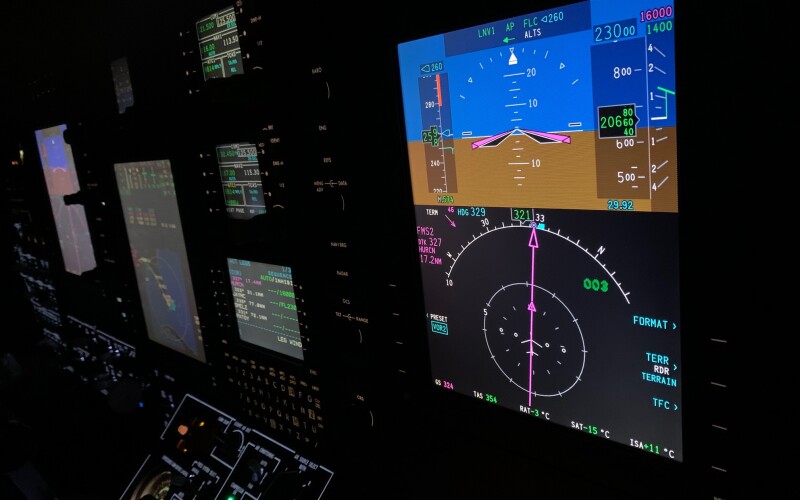Integrating unmanned aerial vehicles (UAVs) into the National Airspace (NAS) is a dilemma facing, not only the Federal Aviation Administration (FAA)— the regulator of that airspace—but every stakeholder, from manufacturers to support systems’ developers to operators to end-users.
In previous articles, we have touched on what needs to change in the National Airspace (NAS) for the system to accept unmanned aircraft. For us to better understand what needs to be done, it is imperative they we comprehend how the system works today.
To do this, let’s place ourselves in the cockpit of a modern aircraft (N444UV) about to fly from Conroe, Texas (KCXO) to Ft. Lauderdale Executive airport (KFXE) in Florida. The pilots file an electronic flight plan and prepare the aircraft. They then call the clearance frequency at the airport and verbally receive the details of in the form of destination, route, altitude, departure frequency, and transponder code in what is known as C.R.A.F.T.
The conversation goes like this:
Pilot: “November 444 uniform victor requesting IFR clearance to Ft. Lauderdale Executive, kilo, fox, x-ray, eco.”
KXCO Clearance: “November 444 uniform victor you are cleared to the Ft. Lauderdale airport kilo fox x-ray eco as filed, maintain 2,000, expect 45,000 ten minutes after, departure frequency 119.7, squawk 4567.”
Pilot: “November 444 uniform victor cleared to the Ft. Lauderdale airport kilo fox x-ray eco as filed, will maintain 2,000, expect 45,000 ten minutes after, departure frequency 119.7, squawk 4567.”
KCXO Clearance: “November 444 uniform victor, read back correct, contact ground on 120.45 when ready to taxi.”
As you can see, once the clearance has been heard by the pilots, it must be read back, and the controller must acknowledge that the read back was correct. Then, the pilots start the engines, prepare the aircraft, and taxi to the runway in constant communication with the ground frequency at Conroe. Once at the entrance to the runway, they change frequencies to Conroe Tower and wait for a clearance to enter the runway and take off. When the aircraft takes to the air and as soon as the climb begins, the tower authorizes the pilots to switch frequencies to the Houston Departure specified in the clearance.
After that, the following different frequencies will be used. (We will the words “near” and “far” to simplify the complexity of the system.):
- Houston Center near - Climb
- Houston Center far - Cruise
- Jacksonville Center far - Cruise
- Jacksonville Center near - Cruise
- Miami Center far - Cruise
- Miami Center near - Descent
- Miami Approach – Descent and approach vectors
- Lauderdale Tower - Landing
- Lauderdale Ground - Taxying to final position in the field
We hope that by now it is obvious that the system is 100% reliant on voice commands by the air traffic controllers (ATC) and acknowledgement of these commands by the pilots.
So, how can we integrate a vehicle without a pilot into this system? Well, for starters, UAVs and advanced air mobility (AAM) will not, initially, be flying from Texas to Florida at 45,000 ft. The plan is for these uncrewed, mostly electric aircraft to make short trips at low altitudes to deliver passengers and cargo, following routes that today are covered by ground vehicles with internal combustion engines and a much bigger polluting footprint.
To do this, UAVs and AAMs will have to operate in a system that relies heavily, if not exclusively, on voice commands, even though the flying altitudes of manned and unmanned aircraft are initially not conflicting.
To address this issue, companies such as Aura Networks are working with the FAA to enhance collaboration between ATC and crewed and uncrewed aircraft.
Aura Networks and the FAA recently entered into a four-year Cooperative Research and Development Agreement (CRADA) to help determine performance standards for ATC voice communications supporting unmanned aircraft systems within the NAS. This initiative is essential to help the FAA draft regulations that will eventually allow cargo flights, infrastructure inspections, and first-responder operations.
Almost simultaneously with the Aura Networks news came another announcement from the FAA stating that the federal agency will begin field-testing new drone-traffic-management capabilities, known as unmanned aircraft system traffic management (UTM), to further integrate uncrewed aircraft into the NAS.
The proposed UTM will include a series of services complementary to, but separate from, ATC services currently provided for manned aircraft. The new system is aimed at small UAV operations in controlled airspace, mostly flying below 400 feet, and is based on current rules and capabilities that enable airspace access and authorization.
Coincidence? I think not. We are witnessing a concerted effort by the industry and regulators to expedite the imminent addition of these unmanned marvels to the NAS.
In September 2021, during Commercial UAV Expo in Las Vegas, we heard FAA administrator Stephen Dickson give the plenary audience the good news that he was encouraged and excited about these non-traditional aircraft joining our safe skies. At the same time, he asked for patience and understanding because the task at hand is hard, and the challenges are many.
Five months later we see concrete actions regarding the two main systems that need to be fine-tuned to accept uncrewed aircraft into the NAS, ATC, and UTM. We remain hopeful and excited that the near future will see more and more tests and waivers that will initiate an era of full integration of manned and unmanned aircraft in controlled airspace.















Comments